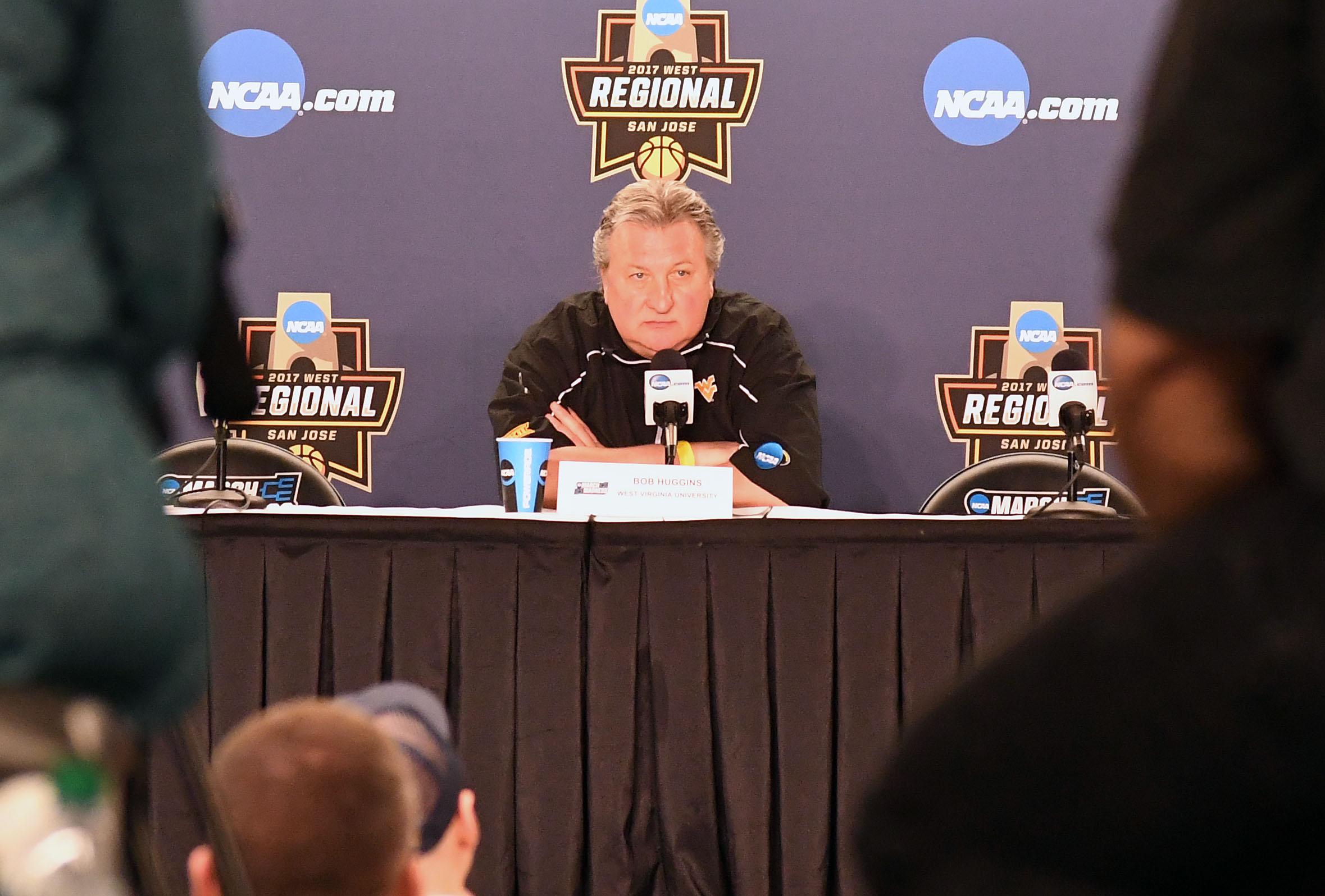MORGANTOWN, W. Va. — The interview will live on through several lifetimes, as long as YouTube or something like it exists.
An overwhelmed Bob Huggins is on the floor at Madison Square Garden, his WVU men’s basketball players are celebrating around him, as the Mountaineers had just captured the 2010 Big East Tournament.
“Take Me Home, Country Roads” is blaring over the loudspeaker, as ESPN’s Doris Burke nestles up next to Huggins and asks what that tournament title meant to him.
“This is very special for me, because it’s West Virginia,” Huggins replies, his voice tailing off just a bit while trying to get the words out.
It is a glimpse of raw emotion that sports journalists spend an entire career trying to capture in words. Generally, we come up short.
Moving forward in a sports world currently controlled by the coronavirus, my biggest fear is that it may be years before we get a true up-close moment like that again.
Not because the Mountaineers won’t win, but rather the restrictions that come with COVID-19 will keep the media from truly capturing it.
So much time and effort have been spent by college conferences and professional sports alike on taking the necessary steps just to get sports back on the field.
The untold story are the protocols that will be put in place for those charged with telling the story.
In the coming months, sports journalists will encounter the same limitations and frustrations that their colleagues covering news and politics have been dealing with for the past four months.
That is to simply create new and creative approaches with limited access to those creating the storylines.
And while Major League Baseball’s compromises or the NBA’s “bubble” in Orlando have been out in the open in terms of getting players back, it will not be business as usual for those covering the coaches and athletes.
That goes for all walks of sports journalists.
“I can tell you there have been many discussions on what a game day will look like as far as media access,” said Michael Fragale, the Senior Associate Athletics Director for Communications at WVU. “Not only here at WVU, but around the country. What you will see is whatever protocols are in place for the stadium, you will also see those in place in the press box, as well.”
In short, say Milan Puskar Stadium opens up at 25% percent capacity when the WVU football team hosts Eastern Kentucky on Sept. 12.
According to Fragale, the press box, too, would be at 25% capacity.
“Will that mean we have to limit the amount of credentialed media? It’s likely,” Fragale said. “It’s not just those in the press box that are a concern. You also have to take into account the number of videographers and photographers on the field. That will be a major concern, and again, these are issues that are being discussed around the country.
“Now, I can’t tell you what the actual number is, because that is still being finalized, but whatever you see numbers-wise throughout the stadium is what you’ll see in the press box.”
Before we get any further, this isn’t a formal complaint on missing out on a free seat at the football stadium or the WVU Coliseum.
This isn’t a plea against WVU infringing on the rights of the media.
More to the point, it’s a comment as to just how much different life will become as a sports journalist and how that will affect all who follows sports.
For the time being, there will be no more traditional press conferences at WVU.
There will be no more sitting alongside coaches and athletes when they are alone and asking personal or intriguing questions that not only can develop a good story, but become the focus of it.
“No way can we take the normal gathering of media and turn them loose on the coaches and players,” Fragale said. “We are in the Zoom era now. I’ve not heard any school or anyone talk about allowing a traditional press conference. I just don’t know if that would even be possible right now.”
So, what does that look like? A lot of the same stuff, to be exact, because reporters are all getting the same details. Gone will be the personal touch that comes with building personal relationships.
You won’t get that raw emotion on Zoom. You won’t get the back-and-forth between writer and athlete that can take a ho-hum game and turn it into their personal reflection.
It’s those details that make the difference for everyone.
In the past, ESPN has done some game broadcasts with their announcers at a remote location. Under COVID-19, more of that can probably be expected.
Coaches’ shows will likely not be broadcast in front of live audiences.
There is a real value to human interaction and that’s the value we all could be losing in the upcoming months.
“My personal guess is you’ll see some agencies not even send their writers and they’ll watch the game from home and then get on the Zoom conference,” Fragale said. “I know some have already reported off of watching the game on TV in the past.”
TWEET @bigjax3211




